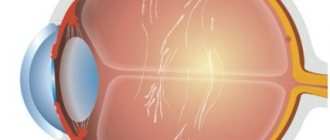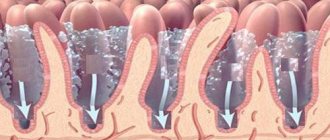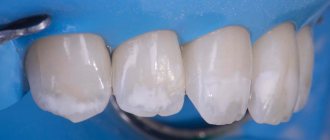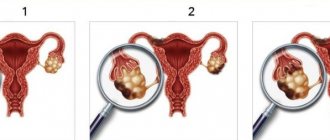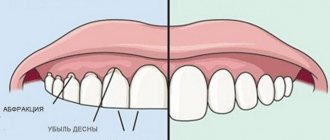Theories of caries occurrence
Recent archaeological research confirms that even our ancestors, who lived more than five thousand years ago, suffered from caries. Information about the destruction of teeth similar to carious ones can be found in the works of ancient and ancient Eastern healers; in the Middle Ages, bad teeth were a widespread problem, and street teeth grinders became characters in folklore and even found their way into many literary works of those times.
The word “caries” itself came to us from Latin and literally means “rotting.” For the sake of fairness, it is worth noting that initially this name was poliomyelitis, but after that a disease that we all know was established under this name - an infectious process that destroys, and sometimes simply “devouring” a person’s teeth. The causes of caries and, as a consequence, ways to get rid of it occupied the minds of many learned men of antiquity and the Middle Ages. All sorts of assumptions have been made - from an excess of “bad juices” entering the body, which was used in antiquity (I must say, there is some truth in this, if by bad juices we mean all kinds of food acids), to “tooth worms” in the Middle Ages.
Can you take care of your dental health yourself?
Yes, sure. There are a number of rules that, if followed daily, will significantly reduce the risk of developing carious lesions:
- Brushing your teeth twice a day. Allows you to remove soft plaque in which bacteria multiply. To get rid of it reliably, you need to brush your teeth morning and evening with a brush that has medium-hard bristles. Each such procedure should last at least 3-4 minutes. A good solution would be to alternate fluoride-containing toothpaste (1 week) and fluoride-free toothpaste (3-4 weeks). This periodicity is due to the fact that enamel has a saturation limit with fluoride. A week of using fluoride-containing paste will provide the enamel with a sufficient amount of this element, and then fluoride will simply be removed from the body. But after a month, its concentration will decrease and its influx will be required again.
- Supplement the procedure with dental floss at least once a day, since the brush is not able to fully clean the spaces between the teeth.
- Regular brushing after meals. Residues should be removed by normal rinsing. It should be done after every meal. And to get rid of food particles that linger in the interdental space, it is best to use dental floss.
- Be careful with sweets! Bacteria that cause caries multiply much more intensively in an environment rich in sugars and fats. Therefore, instead of another cake, it is better to eat an apple or carrot. On the one hand, you deprive the bacteria of additional nutrition, and on the other, the solid consistency of such products itself cleanses the teeth and removes soft plaque.
The above preventive measures can be carried out independently. However, you cannot do without periodic assistance from a dental specialist. Therefore, we recommend contacting our clinic to determine the risk level of caries for you and your family members. And then, based on these results, SM-Dentistry doctors will develop an individual plan for preventive oral examinations for you. Constant preventative care will ensure your dazzling smile and the health of your entire oral cavity.
And of course, if acute symptoms of the disease appear, you should never self-medicate! This will only worsen the situation and cause complications. If you experience pain, we invite you for a consultation with a specialist at the SM-Dentistry clinic, call tel. or fill out the feedback form on our website.
Causes of dental caries
Today, debates about what caries is and why it happens are long gone. The cause of caries is known to everyone - it is carious bacteria that feed on carbohydrate residues from food and live in dental plaque. By the way, we are not born with these bacteria, they are not part of the original composition of our microflora, but once they enter the body, they settle in it forever. As a rule, “caries infection” occurs in childhood, and we perceive this disease from our own parents - most often through shared utensils. However, caries bacteria can lie dormant in our body for a long time, not manifesting themselves until the first opportunity.
And although caries is currently perhaps the most studied dental disease, the question still remains of how to stop caries - discoveries in this field are made almost every year.
Features of the structure of teeth
A tooth is a formation of hard tissue, which differs in structure from other bones, since it is a derived part of the mucosa. The teeth are attached to the bone sockets - alveoli, which are located on the lower and upper jaws. There are 4 types of teeth: molars, premolars, canines and incisors. The first and second ones are for chewing, and the third and fourth ones are for biting food.
Each tooth consists of a root, which is located in the alveolus, a neck, a main part and a crown. Inside the hard tissues, or dentin, there are vessels, capillaries and pulp, they supply the tooth with oxygen and other nutrients.
Dentin is covered with tooth enamel, which protects hard tissues from environmental factors. Caries forms on the enamel, after which it penetrates into the tooth and destroys it. Let's take a closer look at how a carious cavity is formed.
Risk factors for dental caries
One of the most interesting questions is: why some people suffer from caries more often, while others less often, and whether there are those who do not suffer from it at all. Thus, modern theorists and practitioners of dental science identify several risk factors for caries. As you might guess, among these factors there are also very “selective” ones, that is, it is known for certain that some people are initially more predisposed to dental caries. Here are some signs that you should be concerned about tooth decay.
Risks of caries formation
- Flask-shaped fissures.
If there are many places on the surface of your teeth that seem to be created for the accumulation of plaque and the formation of carious cavities, then bacteria will not keep you waiting long. Thus, teeth with flask-shaped fissures (grooves on the chewing surface) are more susceptible to carious lesions. - Crowding of teeth and problems with bite.
Among the individual characteristics that make a person more vulnerable to caries are problems with bite, as well as teeth characterized by crowding - close arrangement relative to each other. On such teeth, which are very difficult, and sometimes impossible, to clean properly, contact caries often occurs. - Geography of residence.
People experience fewer and fewer tooth decay in areas with fluoridated tap water. - Professional activity.
Citizens who work with alkalis, acids and other harmful substances, on the contrary, are more susceptible to caries. - Age.
Baby teeth in young children very often become victims of carious bacteria, the greatest activity of which, however, occurs between the ages of 11 and 40 years. - Gender.
Women are more likely than men to suffer from this disease, which is primarily due to tooth decay during pregnancy.
The risk of caries is influenced by the quality of tooth enamel and pellicle - the thin organic film covering it, the work of the salivary glands and the chemical composition of saliva, diet and even sleep patterns.
Why is there a problem?
- The cause of destruction is external and internal influences.
- Modern people eat refined foods.
- Soft food, unlike hard food, does not help clean teeth. Its particles remain on the surface of the enamel and clog the interdental spaces.
- Over time, germs accumulate. The product of their vital activity, lactic acid, dissolves the mineral elements in the tooth. The result of this process is a small hole - a carious defect.
In regions where they eat a lot of sugar, almost all residents are affected by the disease - up to 99% of the population. In tribes that eat only natural food, caries does not exceed 3%.
Factors provoking the disease:
- Lack of sunlight (in northern regions)
- Lack of calcium in the diet;
- Lack of fluoride in water.
There are a number of reasons for the development of caries:
- Insufficient oral care;
- Eating high in sugar and carbohydrates;
- Microflora with a high content of acid-producing streptococci;
- Low immunity;
- Incorrectly manufactured dentures that injure tooth enamel and prevent high-quality cleaning of teeth and gums;
- Violation of enamel formation at a very early age;
- Viscous saliva;
- Pregnancy and lactation period;
- Hormonal changes;
- Metabolic disease.
These factors:
- Helps increase acidity in the mouth;
- Demineralize tissues;
- Thinner tooth enamel.
Their effect reduces caries resistance - resistance to destructive factors.
Symptoms of caries
Caries will not be long in coming in the following cases: if you pay little attention to daily dental hygiene; with reduced immunity, for example, due to a long-term cold; if you eat a lot of fast carbohydrates.
Carious bacteria and the acid they secrete are very insidious - in the initial stages, caries is practically asymptomatic. That is why it is so important to regularly attend preventive examinations, during which the dentist has the opportunity to diagnose caries in the initial stages.
The first signs of caries
- Stains on teeth.
The first signs of caries are spots on the enamel - they can be white, brown or even black. However, even such spots can be difficult to see on your own. - Pain from caries.
If you feel that a tooth has begun to react to sweet foods, cold and hot, then you should consult a dentist. - Hole due to caries.
If you can feel the hole in the tooth with your tongue, it means that caries has already developed into a more severe form and requires immediate treatment. - Bad breath due to caries.
When a person does not rush to the dentist, experimenting with caries treatment at home, teeth begin to rot and decay. The result is bad breath.
How to understand that it is caries?
Caries in the spot stage can be mistaken for hypoplasia or fluorosis; superficial caries has similar features to wedge-shaped defects and dentin erosion. It is important not to confuse caries with other diseases. To distinguish caries from fluorosis and hypoplasia, the affected area is stained with a special dye. Dyes are activated only during caries. The period of development of the pathology is also taken into account: hypoplasia and fluorosis develop in infancy - before teething, and caries - after eruption on the “weak” areas of the tooth from negative external influences.
Stages of caries - types and intensity
Black's classification of caries is considered the most popular among modern dentists. According to this system, caries is divided into six classes depending on the location of carious cavities and the extent of dental caries.
Tooth enamel caries
Class I caries, or superficial caries,
As a rule, it affects the already mentioned fissures - grooves on the chewing teeth. Sometimes such caries is called caries in the spot stage; if you notice it in time and take action, you can even do without drilling with a drill and stop the carious process in the bud, preventing it from spreading deeper. If you miss the first signs, then the deterioration of the condition will not take long.
Contact type of caries
The next stage is class II caries
- often affects the contacts of chewing teeth, which is why it is sometimes called
contact caries
. At this stage, as at the previous one, caries does not bother its carrier and can go unnoticed for a long time.
Front teeth
Class III caries, or intermediate caries,
affects the contact surfaces of the front teeth. Many experts consider the best prevention against it to be flossing. Also, average caries is a disease of those with a sweet tooth.
Dentin caries
When treatment is not carried out, caries of the anterior teeth of the middle stage flows into the next class - IV
and already affects dentin.
Prikornevoy
Class V caries, also known as basal or cervical caries,
spreads along the gum line on both the front and chewing teeth. It manifests itself as increased sensitivity of the teeth in the area of the necks of the teeth. Typically, cervical caries occurs as a result of poor oral hygiene.
Atypical
Caries of the last class according to Black - VI - is also called atypical caries. This type of caries destroys the cutting edge and cusps of the teeth; scoop-shaped teeth are most susceptible to it.
It is also necessary to note three special categories of caries: multiple, recurrent and root caries. Their distinctive features are clear from their names, but let’s look at them in more detail.
Multiple dental caries
Multiple caries, also generalized or systemic,
affects a large number of teeth at once - from six to twenty, but even this is not enough for it - in each tooth affected by it, the dentist can find not one, but two or even three carious cavities. As you might guess, such caries develops quickly and can lead to the loss of several teeth or even an entire row of teeth. The causes of such a carious catastrophe are often immune, infectious and other severe general somatic diseases. Sometimes this happens to teenagers during puberty, when the body goes through a severe hormonal storm, which is why the immune system can also experience stress.
Secondary caries
Recurrent caries, also known as secondary,
as the name implies, it occurs in a previously affected, treated and filled tooth. The reasons for its return may be poor-quality treatment, as well as untimely replacement of fillings or other orthopedic structures - after all, fillings and crowns, although they last a long time, alas, do not last forever. Over time, they begin to adhere worse to the tooth tissues; saliva, bacteria, plaque, and food debris—true friends of caries—get into the gaps. Secondary caries can be distinguished by the brown outline at the junction of the orthopedic structure and dental tissues.
Root caries
Root caries
affects the roots of teeth exposed during gum recession. This type of caries is directly related to periodontal disease, malocclusion and age-related changes.
As the name suggests, root caries affects the exposed root of the tooth. This form is usually observed in older people and usually affects the lateral teeth. This is explained by the fact that with age, the risk of periodontitis increases, bone atrophy occurs, gums recede, and salivation decreases. First, the visible surface of the tooth root is affected, which becomes dark in color. Then, progressing, the carious lesion expands and completely covers the root part of the tooth. This often leads to a fracture with complete separation of the crown from the root (amputation caries). The disease often recurs if the root surface is left exposed and teeth are brushed irregularly or incorrectly.
So, as we have already found out, almost no one is immune from caries, and some people are at special risk groups from birth or due to their lifestyle. However, regardless of whether you have “aggravating circumstances”, the most important thing you need to remember is: good hygiene, regular preventive examinations coupled with professional cleaning and timely treatment of caries in the initial stages are the key to a beautiful and healthy smile for many years .
Treatment with preparation of hard tooth tissues
This method is based on hardware treatment of the affected areas of the tooth under anesthesia. Depending on the stage of development of the disease, there are several stages in treatment. For average caries it is:
- anesthesia
- mechanical and medicinal treatment of canals
- installation of protective lining
- filling taking into account the dental characteristics of the tooth
- grinding and polishing of tooth surfaces
Medium and deep stage treatment takes an hour on average, but in some cases it takes longer. To treat average caries, one visit is enough.
The effect of treatment procedures is determined by the professionalism of the doctor, the quality of medications and equipment, and the individual characteristics of the patient’s body. The key to maintaining the result is compliance with proper nutrition and hygiene rules, as well as maintaining the protective functions of the body.

